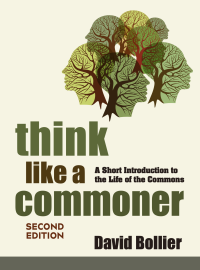Readers, please excuse two zany intellectual property stories in a row, but this latest development could not be ignored. Last Friday, a federal district court in San Francisco decided that the sequence of 26 asanas, or yoga poses, developed by Bikram Choudhury as part of his Starbuck’s-like franchising of yoga, may be protected by copyright law. Judge Phyllis Hamilton refused to dismiss the case as beyond the scope of the law, and so the case is now cleared to go to trial. (I rely upon Jeff Chorney’s April 4, 2005 account for The Recorder, the San Francisco legal publication; subscription required.)
Despite the manifest stupidity of assigning property rights to the sequence of yoga poses that have been around for millennia, the judge felt that a conscientious reading of the law left her no choice but to let this ridiculous case proceed. It only goes to show how the law almost literally cannot comprehend the value of the public domain or its more mature sibling, the commons. Or as Charles Dickens’ character, Mr. Bumble, famously put it: “If the law supposes that, the law is an ass.”
Here’s the backstory: Choudhury – widely known as Bikram – is a self-styled yoga entrepreneur who moved from India to the U.S. to teach yoga. He developed his own version of Hatha yoga – which he called “Bikram Yoga” – which consists of a tightly scripted sequence of 26 poses and two breathing exercises performed in front of mirrors and in 105-degree rooms. Yoga has many different traditions and styles, but none are “owned” by anyone; they are collectively practiced traditions available to everyone. This is a pretty good definition of the public domain.
Bikram decided he wanted to own “his” “original” version of yoga so he could franchise it and get rich. He claimed copyright protection in his unique sequence of 26 poses and began to sue yoga studios that taught Bikram Yoga without paying his franchise fee. Just as a sequence of musical notes or dance steps can be copyrighted, why not yoga too? he argued. Birkam is attempting a classic enclosure of the commons – the forced privatization of a resource that has historically been available to everyone for free.
Rather than quake under the threat of a lawsuit, a group of yoga studios that practice Bikram-like methods banded together as Open Source Yoga Unity (inspired by the example of open source software) to seek a declaratory judgment prohibiting Bikram from shutting them down. Here’s what the judge ruled:
[Open Source] has provided no persuasive authority that a compilation of yoga asanas cannot be protected under the copyright laws in the same manner as other compilations. Therefore, if the trier of fact determines that a sufficient number of the individual yoga asanas are arranged in a sufficiently creative manner, copyright protection for the yoga sequence would be available.
In essence, the law barely recognizes the public domain or its importance! All you need to do to take a public-domain work private is to make some minor changes of sufficient originality in order to claim (in effect) proprietary protection.
The dispute over the “ownership” of Bikram Yoga prompts me to reflect on the difference between the public domain and the commons. The public domain is open and accessible to all, while the commons is a shared resource that is governed by certain rules designed to protect it. The difference matters – because the public domain is not likely to develop and grow, and can be taken private through ingenious means – while a properly structured commons can develop a rich, robust life of its own.
Consider how few people want to contribute their creativity to freeware (public-domain software) because anyone can use it as the base for something larger and take it private (think Disney’s use of fairy tales). But open source software is controlled by licenses that prevent the core value it from being taken private by anyone. That’s why Linux and other open-source programs have attracted huge communities of programmers and gotten better. The software commons is protected from enclosure.
It’s a shame to think that something an ancient and venerable as yoga, in whatever tradition, needs affirmative legal protection to stay open and available to everyone. But Open Source Yoga Unity certainly has the right idea. Yoga needs to be regarded as a commons, not as a public domain resource vulnerable to expropriation. In the meantime, Open Source attorney Elizabeth Rader will argue in the coming trial that Bikram’s version of yoga is a “method,” which requires a patent, and that the sequence of poses does not reach a sufficient level of originality to be protectible. Good luck, Open Source Yoga Unity, but it’s hard to use the master’s tools against him.











Recent comments